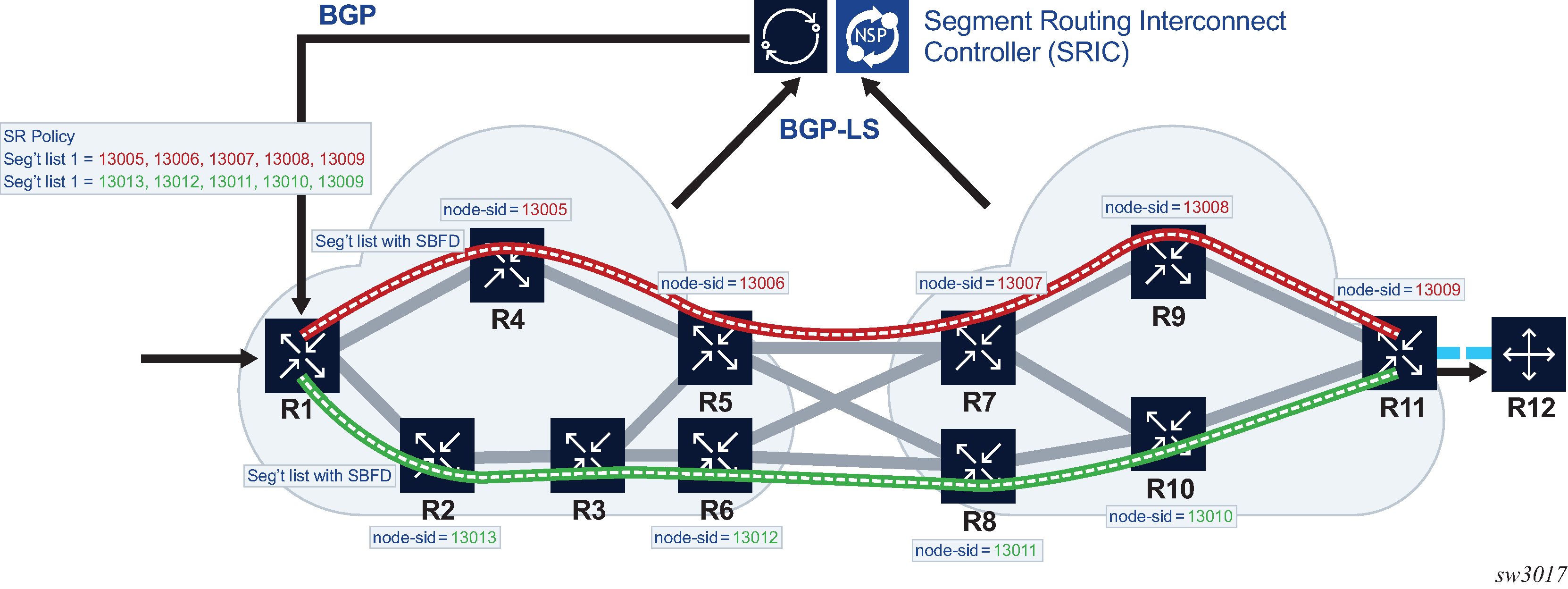ECMP protected mode programs all segment lists of the top-two candidate paths of an SR policy in the IOM. ECMP protected mode allows establishment of S-BFD on all of those segment lists. All of the segment lists of a specified candidate path are in the same protection group, but different candidate paths are not in the same protection group. Switchover between candidate paths is triggered by the control plane. A segment list is only included in the ECMP set of segment lists if its S-BFD session is up (user traffic is forwarded on a segment list whose S-BFD session is down). See Figure: ECMP protected SR policy with S-BFD.

Figure: Example application of ECMP protected mode with S-BFD depicts an application for S-BFD on SR policies with ECMP protected mode. Here, an SR policy is programmed at R1 by the Nokia NSP with two segment lists from R1 to R11. One segment list is using R4/R5/R7R9, and the other segment list is using R2/R3/R6/R8 and R10. These segment lists are using diverse paths and traffic that is sprayed across both of them according to the configured hashing algorithm. Separate S-BFD sessions are run on each segment list and allow the rapid detection of data path failures along the whole segment list path. R1 is able to rapidly remove a segment list from the ECMP set if S-BFD goes down, and is also able to failover to a backup SR policy (not shown) (or fall back to a less preferred LSP) if more than a specific number of the S-BFD sessions go down.
